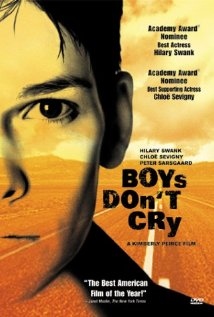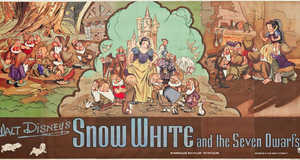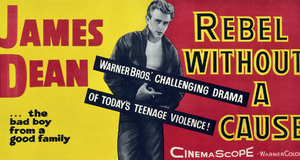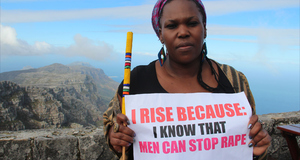Hegemonic Masculinity in Boys Don't Cry (1999)
By
2014, Vol. 6 No. 03 | pg. 1/2 | »
IN THIS ARTICLE
KEYWORDS
The need for individuals to categorize themselves and others based on gender has guided the way individuals interact with one another throughout history. The construction of gender, particularly when it comes to young males, has led to the amplification of negative characteristics associated with hegemonic masculinity. These negative characteristics have often been associated with an increase in the violence and aggression used in homophobic hate crimes committed by men. In order to highlight the negative impacts that hegemonic masculinity has on constructions of gender and sexuality, the film Boys Don’t Cry will be discussed. In this paper, the notion of hegemonic masculinity is explored in the context of the film. An analysis of themes within the film is conducted to identify scenes which display acts of (1) conforming to expectations of masculinity; (2) the celebration of ‘toughness;’ (3) the need to categorize gender; (4) gendered violence; and (5), the amplification of heterosexuality. Hegemonic MasculinityHegemonic masculinity, as defined by Connell (1987) is “the culturally idealized form of [the] masculine character” (p. 83). The willingness, by men, to resort to violence in order to resolve conflicts, as well as the projection of dominance and toughness, are fundamental characteristics associated with the masculine identity (Anderson, 1999; Kimmel, 2000; Messerschmidt, 1993). The title of the film Boys Don’t Cry harks back to the 1979 song written by the Cure and is connected to the main themes within the film of gender and sexuality. These themes are challenged and enforced through dominant masculine ideologies held by the main characters. Boys Don’t Cry, written and directed by Kimberly Peirce, is a film adapted from the true story of Brandon Teena, a female to male transsexual who was brutally raped and murdered in 1993 (Siegel, 2003). Boys Don't Cry in SummaryThe film Boys Don’t Cry occurs in a working-class American setting, in the small town of Lincoln Nebraska. The film is about a female to male transgendered person (Brandon Teena) looking to escape the restrictions of gender and sexuality present within his hometown (Prest, 2012). After being evicted from his cousin’s trailer, due to physical threats by men, Brandon moves to Falls City, Nebraska. Brandon engages in a bar fight, defending a female from a male aggressor, resulting in him being befriended by a group of locals (Tom Nissen, John Lotter, and Candace). Brandon, shortly after moving to Falls City, begins to develop a relationship with Lana Tisdel, who is unaware, like the others, of Brandon’s biological sex (Siegel, 2003; Swan, 2011). After discovering that Brandon is transgendered, Tom and John violently beat and rape him. Brandon files charges with the local police, who then inform Tom and John of the charges. The next morning the two men attack Brandon, shooting him in the head and stabbing him several times (Olafsdóttir, 1998). Brandon was only 21-years-old when he was murdered.Expectations of MasculinityThe beginning of the film shows Brandon driving down an empty road alone at night. A car suddenly passes him, followed by police lights flashing in the distance (Swan, 2011). The scene begins to fade away and blend in with the night sky. This scene is significant, because it is reflective of the ‘reckless’ events that occur later on in the film, when Brandon participates in a police chase, following the instructions of John (Siegel, 2003). Careless behaviour using vehicles is shown by the men throughout the entire film. Masculinity is often associated with the car culture, were men engage in speeding and aggressive driving. As noted by Lumsden (2010), this behaviour conveys the hierarchies of power and status that are established through car-related practices. Brandon, in the following scene, is shown getting his hair cut, by his cousin, inside his cousin’s trailer. The beginning of the film is important, portraying the expectations of masculinity Brandon seeks to maintain for the rest of the movie (Goodey, 1997; Swan, 2011). From the beginning of the film Brandon is trying to conform to the socially constructed vision of what men look like, and how they need to act (Herz, 2007). Showing the desire to conform to socially constructed gender norms of the male figure, Brandon’s behaviour in the film is based on external expectations of masculinity (Connell & Messerschmidt, 2005; Hanna, 1988). This adopted masculinity highlights the belief that males need to exert specific characteristics in order to become accepted by society (cutting his hair, speaking in a lower voice and wearing ‘masculine’ clothing). In society boys are brought up and given leading roles, while girls are given subordinate roles (Happé & Hüsken, 2007; Karlson & Simonsson, 2006). Through these roles, boys are taught at a young age to be ‘tough’ and not to cry because it shows ‘weakness.’ These gender norms can be understood through the notion of “pedagogy,” which is the science of education, focusing on the socialization of children (Foucault, 1978). Boys and girls are brought up differently and, as a result, learn different things. It is through dominant power structures that knowledge is influenced and produced, leading to categorizations that confine individuals’ competencies, and behaviours, based on their assigned gender (Goodey, 1997; Karlson & Simonsson, 2006). The expectations of masculinity within the film are amplified when Brandon adopts the characteristics that are normalized by others within society (Fagot & Leinbach, 1993). Aggressive behaviours associated with males are often overlooked and minimized by the wider culture. In the film, Boys Don’t Cry, the sex scene between Lana and Brandon illustrates the common practices of heterosexuality, where men take control through dominant positioning (Hanna, 1988; Peirce, 1999). For example, practices of heterosexuality are shown in the scene were Brandon (taking on a male role) asserts power and positions himself ‘on top’ of Lana during intercourse (Siegel, 2003; Goodey, 1997). Brandon becomes the penetrator, rather than the penetrated, placing Lana into a submissive position commonly associated with women (Butler, 1990; Rooney, 2001). The Celebration of ‘Toughness’Within the film, hegemonic masculinity is displayed, reinforced, and celebrated through acts of violence (bar fights, car chases, self-mutilation and aggression), which the men engage in to display strength and power (Connell & Messerschmidt, 2005). Brandon engages in these acts in order to ‘prove’ his masculinity and gain approval from the two men, John and Tom (Messerschmidt, 1993; Peirce, 1999). These ideologies of ‘masculinity’ held by the characters in the film are embedded in the social structure of society. The main character, Brandon, in taking on the role of a man, begins to convey a dark emptiness that represents the way young men feel in the search for acceptance, through performing culturally approved acts of masculinity (Happé & Hüsken, 2007; Siegel, 2003). The notion of emptiness can also be seen in the movie poster, displaying an almost translucent picture of the main character, Brandon, in front of a deserted highway. Expectations of what it is to be a ‘real man,’ within today’s society, causes the stigmatization of others who do not conform to these socially constructed standards. Terms such as ‘wimp,’ ‘fag,’ ‘sissy,’ and ‘pussy’ is assigned to those who do not ‘measure up’ to expectations of the masculine identity (Brod, 1987; Herz, 2007). This is highlighted in the scene were Brandon and John are sitting around a campfire drinking late at night. John shows Brandon his self-inflicted scars left by a knife. When John tries to convince Brandon to hurt himself, Brandon states, “I guess I’m just a pussy compared to you” (Peirce, 1999). The Need to Categorize GenderThe categorization of gender, based on biological sex, dictates the way in which individuals treat one another. Individuals use surface information, on subjects, to make inferences about feminine and masculine identities (Butler, 1990; Happé & Hüsken, 2007; Skitka & Maslach, 1990). Hegemonic masculinity is framed in relation to subordinated masculinities and femininity, causing males to use categorization based on gender as a way to position themselves in relation to others (Hanna, 1988; Jones, 2004). The scene where Brandon is forced into the washroom and his pants are physically removed, by John and Tom, highlights the need to identify gender based on one’s biological sex (Goodey, 1997). The group is unaware of Brandon’s ‘identity’ until he is arrested on previous charges and placed in the local women’s detention center (Siegel, 2003). Both John and Tom confront Brandon, at Lana’s mother’s house, after seeing his name in a local newspaper as Teena Brandon (Peirce, 1999). The social and historical construction of the human body and its role within cultural discourse can be understood through Mills’ concept of the sociological imagination (1959). Individuals need to classify people on the basis of their biological sex reflecting the wider standards of social practices. At birth, children are placed into categories based on gender (females wear pink – males wear blue), any deviation from these culturally ‘approved’ norms may cause the child and/or parent to become a target of social disapproval (Brod, 1987; Fagot & Leinbach, 1993; Happé & Hüsken, 2007). After Brandon is raped by John and Tom, he escapes from the two men and files a report with the local police (Swan, 2001). Brandon is victimized again by the local sheriff who humiliates Brandon during an interview regarding his rape. The sheriff places blame on Brandon for the rape because of his ‘misleading’ gender (Siegel, 2003). When the lead sheriff questions Brandon about the rape, the focus is taken away from the crime itself and is shifted to the categorization of gender (Rooney, 2001). This scene highlights the primary reason for the under-reporting of hate crimes by the lesbian, gay, bisexual, transgendered and queer (LGBTQ) community. With the growing fear of homophobic treatment and attitudes by the police, it is reported that only one in five LGBTQ people “say they expect discrimination from the police when reporting a homophobic hate crime” (Hunt & Dick, 2008, p. 4).Continued on Next Page » Suggested Reading from Inquiries Journal
Inquiries Journal provides undergraduate and graduate students around the world a platform for the wide dissemination of academic work over a range of core disciplines. Representing the work of students from hundreds of institutions around the globe, Inquiries Journal's large database of academic articles is completely free. Learn more | Blog | Submit Latest in Film & Media |



















